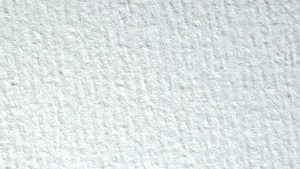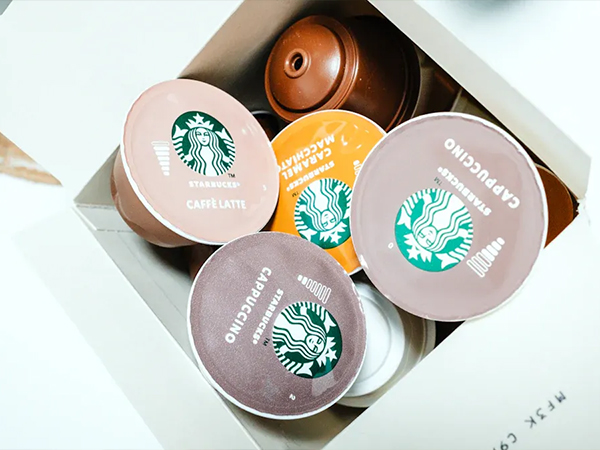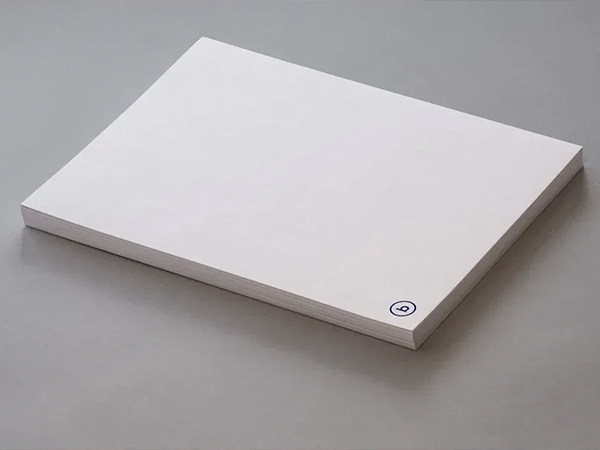
I have seen firsthand how a surface sizing agent transforms ordinary paper into a high-performance material. When I look at a sheet of paper, I know that its ability to resist water, deliver crisp print results, and endure handling comes from precise chemical engineering. Take a look at how different sizing agents shape paper properties:
| Aspect | Quantitative Impact / Evidence |
|---|---|
| Water Resistance & Durability | Rosin sizing agents traditionally dominate due to imparting water resistance and durability, maintaining steady demand in traditional markets. |
| Printability & Strength | Synthetic sizing agents are engineered to improve printability, reduce water absorption, and enhance paper strength, driving their increasing adoption. |
| Sustainability & Recycled Paper | Starch sizing agents, derived from renewable sources, improve quality and strength of recycled papers, supporting sustainability trends. |
| Packaging Paper Demand | Rapid growth in e-commerce fuels demand for durable packaging papers enhanced by sizing agents to withstand transportation stresses. |
| Specialty Papers Demand | Specialty papers require water resistance, durability, and flexibility, achieved through advanced sizing agents, supporting growth in medical, construction, and food sectors. |
| High-Speed Printing | Advanced wetting agents reduce surface tension, improving ink penetration and uniformity, thus enhancing print quality and longevity in high-speed printing. |
| Market Growth Drivers | Increasing demand for biodegradable and eco-friendly sizing agents aligns with environmental regulations and consumer preferences, reflecting measurable market expansion. |
When I consider the invisible chemistry behind everyday paper products, I see how these agents make the difference between flimsy sheets and durable, high-quality paper.
Key Takeaways
- Surface sizing agents improve paper by making it water-resistant, stronger, and better for printing.
- Choosing the right sizing agent depends on the paper’s use, such as printing, packaging, or specialty needs.
- Natural agents like starch are eco-friendly and biodegradable but may offer less durability than synthetic ones.
- Synthetic agents provide strong water resistance and durability, working well in various paper types and conditions.
- Combining surface and internal sizing can create paper with both strong surface properties and deep moisture resistance.
- Proper application of sizing agents boosts machine efficiency by reducing paper breaks, waste, and downtime.
- Understanding the chemistry of sizing agents helps tailor paper properties like ink holdout, strength, and water resistance.
- Using eco-friendly and biodegradable sizing agents supports sustainability and reduces environmental impact.
Surface Sizing Agent Basics
What Is a Surface Sizing Agent
When I work with paper, I rely on a surface sizing agent to improve its performance. In papermaking, a surface sizing agent is a polymeric material, such as starch or synthetic polymers, that I apply to the surface of the paper after it forms. This agent fills the tiny pores and capillaries on the sheet, creating a barrier that reduces water absorption. I often use materials like starch, polyvinyl alcohol, or synthetic copolymers for this purpose. These agents do not make the fibers themselves hydrophobic. Instead, they seal the surface, which helps the paper resist water and improves its ability to hold ink during printing.
Tip: I always choose the right surface sizing agent based on the final use of the paper. For example, printing paper needs a different agent than packaging paper.
How Surface Sizing Works
I apply the surface sizing agent at the size press, which is a part of the papermaking machine that treats the paper after it forms. The agent forms a thin, even layer on the surface. This layer acts like a shield, blocking water and ink from soaking into the paper too quickly. By filling the surface pores, the agent increases the paper’s strength and smoothness. I notice that this process also helps prevent dusting and fiber loss during high-speed printing. The result is a sheet that feels stronger and looks better.
Surface vs. Internal Sizing
When I compare surface sizing to internal sizing, I see clear differences in how they work and what they achieve:
- Surface sizing happens after the paper forms. I use it to create a water-resistant layer on the outside. This method improves printability, surface strength, and ink holdout. It also makes the paper smoother and reduces dusting.
- Internal sizing takes place during the wet-end process, before the paper forms. I add agents like alkyl ketene dimer (AKD) to the pulp. These agents penetrate the fibers, making them hydrophobic from within. This approach gives the paper long-lasting moisture resistance.
Here is a quick comparison:
| Feature | Surface Sizing | Internal Sizing |
|---|---|---|
|
Application Stage |
After sheet formation |
Before sheet formation |
|
Main Function |
Surface water resistance, print quality |
Internal moisture resistance |
|
Impact on Paper |
Improves surface strength, erasability, and smoothness |
Provides durable hydrophobicity |
|
Effect on Chemistry |
Does not alter pH |
May require pH monitoring |
I often use both methods together for specialty papers. This dual approach gives the paper strong surface properties and deep, lasting resistance to moisture.
Importance in Papermaking
Printability
When I evaluate paper for print jobs, I always focus on printability. Surface sizing agents play a critical role here. I apply agents like carboxymethyl cellulose (CMC) to form a thin film on the paper surface. This film fills in tiny irregularities and reduces porosity. As a result, the paper holds ink on the surface instead of letting it soak in too quickly. I see sharper, more vibrant images and text. The paper feels smoother, which helps it run better on printing equipment.
Tip: I recommend using modified starches as natural binders. They stabilize ink and improve print sharpness.
Surface sizing agents also control ink absorption. They reduce feathering, which means the ink does not spread out and blur the image. I notice less picking and linting, so the paper stays clean and strong even at high printing speeds. Optimized coating uniformity gives the paper a glossy, professional finish. When I use the right sizing agent, I achieve crisp, clear prints for both offset and inkjet methods.
- Enhanced ink holdout keeps ink on the surface for sharper images.
- Improved surface strength supports higher printing speeds.
- Uniform coating creates a smooth, glossy finish.
Water Resistance
Water resistance is another key property I look for in quality paper. Surface sizing agents make a big difference here. When I treat paper with a blend of starch, APMP effluent, and aluminum sulfate, I see a dramatic reduction in water absorption. The Cobb value, which measures how much water the paper absorbs, drops from over 39.8 g/m² in untreated paper to just 22 g/m² in treated paper. The water contact angle also increases, showing that the paper becomes more hydrophobic.
| Parameter | Untreated Paper | Sized Paper (Starch:APMP Effluent:Al₂(SO₄)₃) |
|---|---|---|
|
Cobb Value (g/m²) |
>39.8 |
22 |
|
Water Contact Angle (°) at 120 s |
<90 |
115.6–126.6 |
I rely on these improvements to produce packaging and specialty papers that must resist moisture during storage and transport.
Surface Strength
Surface strength matters every time I handle or print on paper. I use anionic surface sizing agents to form a protective film on the paper. This film reinforces the surface fibers and reduces dusting. I see less fiber loss and fewer breaks during printing and handling. Standard industry tests confirm that these microscopic improvements in fiber bonding translate to greater durability and resistance to damage. When I choose the right sizing agent, I deliver paper that stands up to demanding applications and repeated use.
Machine Efficiency
When I operate a papermaking machine, I always pay close attention to how surface sizing agents affect the entire process. These agents do more than just improve the final paper quality. They also play a critical role in keeping the production line running smoothly and efficiently.
I notice that a well-chosen surface sizing agent reduces paper breaks during high-speed runs. The sizing layer strengthens the sheet, so it resists tearing and edge cracking as it moves through rollers and dryers. This means I spend less time stopping the machine to fix breaks or jams. Every minute saved translates into higher productivity and lower operating costs.
Surface sizing agents also help control dust and lint generation. When I use the right agent, the paper surface holds fibers more tightly. This reduces the amount of loose material that can clog sensors, coat machine parts, or contaminate other products. Clean machines run longer between maintenance cycles, which keeps my workflow steady.
Note: Consistent sizing application leads to fewer defects and less waste. I always monitor the size press to ensure even coverage.
I often track key performance indicators to measure machine efficiency. Here is a table that summarizes the impact of surface sizing agents on typical machine metrics:
| Metric | Without Sizing Agent | With Sizing Agent |
|---|---|---|
|
Paper Breaks per Shift |
4–6 |
1–2 |
|
Cleaning Frequency |
Every 8 hours |
Every 16–24 hours |
|
Production Speed (m/min) |
600–700 |
800–900 |
|
Waste Rate (%) |
3–5 |
1–2 |
I see that the right sizing agent can boost production speed by up to 30%. It also cuts waste in half. These improvements make a big difference in profitability, especially when I run large batches or specialty grades.
Surface sizing agents also help with machine runnability. The treated paper moves smoothly through calenders, winders, and cutters. I experience fewer stoppages and less downtime. This reliability allows me to meet tight delivery schedules and maintain consistent product quality.
In my experience, investing in the right surface sizing agent always pays off. I recommend regular testing and adjustment to match the agent to the specific paper grade and machine conditions. This approach ensures maximum efficiency and keeps the entire operation running at its best.
Types of Surface Sizing Agent
When I select a surface sizing agent for papermaking, I always consider the chemical composition, performance, and environmental impact. The main categories include natural agents, synthetic agents, and blended or modified agents. Each type brings unique advantages and challenges to the papermaking process.
Natural Agents
Natural agents have a long history in papermaking. I often choose them for their eco-friendly properties and renewable sources. These agents come from plants or animals and are biodegradable, making them ideal for sustainable paper production.
Modified Starch
I frequently use modified starch as a surface sizing agent. Starch comes from plants like corn, potato, sorghum, and tapioca. It consists of amylose and amylopectin, which are polysaccharides. I modify starch to adjust its viscosity and improve printability. Modified starch increases paper strength and fold endurance, but sometimes it can reduce tear strength. I find it works well for both internal and surface sizing, especially when I want to enhance the sustainability of my paper products.
| Natural Surface Sizing Agent | Source / Origin | Properties and Usage |
|---|---|---|
|
Starch |
Corn, potato, sorghum, tapioca |
Improves strength and fold endurance; modified for better viscosity and printability; sustainable |
Rosin
Rosin, derived from pine trees, remains a traditional choice in the industry. I use rosin mainly for its water resistance properties. It works best in acidic paper formulations. Rosin sizing improves printability and dimensional stability, but it does not perform well in alkaline environments. I often see rosin used in packaging and specialty papers where water resistance is critical.
Gelatin
Gelatin, an animal-derived protein, serves as another natural sizing agent. I use gelatin when I need a film-forming agent that provides a smooth surface and enhances print quality. Although less common today, gelatin still finds use in specialty papers and archival materials due to its excellent film-forming ability.
Note: Natural agents are biodegradable and cost-effective, but they may not provide the same level of durability as synthetic options.
Synthetic Agents
Synthetic agents have transformed the papermaking industry. I rely on them when I need superior adhesion, abrasion resistance, and durability. These agents use advanced polymers and work well in both acidic and alkaline conditions.
Alkyl Ketene Dimer (AKD)
AKD is a synthetic sizing agent that I use for its strong hydrophobic properties. It forms chemical bonds with cellulose fibers, giving the paper excellent water resistance. AKD works in neutral and alkaline environments, making it versatile for many paper grades.
Alkenyl Succinic Anhydride (ASA)
ASA provides rapid sizing and strong water resistance. I apply ASA when I need quick curing and compatibility with high-speed machines. However, ASA can sometimes reduce paper brightness if it reacts with certain pigments.
Styrene Maleic Anhydride (SMA)
SMA is a copolymer that I use to improve surface strength and ink holdout. It enhances the mechanical properties of paper and works well with a variety of pigments. SMA also increases the brightness and color saturation of printed images.
Styrene Acrylic Acid (SAA)
SAA offers excellent film-forming properties and water resistance. I choose SAA when I need a sizing agent that provides both durability and print quality. It is compatible with most pigments and works in a wide range of paper applications.
Polyurethane (PUR)
Polyurethane-based agents deliver outstanding abrasion resistance and flexibility. I use PUR when I need paper that can withstand heavy handling or mechanical stress. PUR also improves the overall durability of specialty papers.
Polyvinyl Alcohol (PVA)
PVA is a synthetic polymer that I rely on for its strong adhesion and film-forming ability. It dissolves easily in water and creates a smooth, uniform surface. PVA enhances both the strength and printability of paper, making it a popular choice for high-quality printing grades.
| Type of Sizing Agent | Advantages | Disadvantages |
|---|---|---|
|
Natural (e.g., Starch, Rosin) |
Eco-friendly; low cost; improves printability, strength, and dimensional stability; recyclable |
Limited to acidic formulations; less effective in alkaline environments |
|
Synthetic (e.g., ASA, SAA, SMA, PUR, PVA) |
Versatile in all pH conditions; superior water resistance and mechanical properties; enhances brightness and color |
Some may reduce brightness with certain pigments; higher cost |
Tip: I always match the synthetic agent to the specific paper grade and end-use requirements for optimal results.
Blended and Modified Agents
Blended or hybrid agents combine the strengths of both natural and synthetic components. I use these when I want to balance cost, performance, and environmental impact. For example, I might blend modified starch with a synthetic polymer to improve adhesion and durability while keeping the product sustainable.
- Blended agents enhance weaving efficiency and cost-effectiveness.
- They optimize tensile strength and interfacial adhesion.
- I find that the right blend can reduce waste and improve machine runnability.
| Sizing Agent Type | Chemical Composition | Performance Characteristics |
|---|---|---|
|
Natural |
Plant-based starches |
Eco-friendly; sustainable; limited bonding strength |
|
Synthetic |
Advanced polymers |
Superior adhesion; durable; versatile |
|
Blended (Hybrid) |
Natural + Synthetic |
Balanced cost and performance; enhanced efficiency |
When I select a surface sizing agent, I always consider fiber compatibility, performance needs, environmental impact, and cost. The right choice ensures the paper meets the demands of modern printing, packaging, and specialty applications.
Surface Sizing Agent Chemistry

Amphiphilic Structure
When I select a surface sizing agent, I always pay close attention to its amphiphilic structure. This means the molecule contains both hydrophilic (water-attracting) and hydrophobic (water-repelling) segments. I often work with block copolymers created through controlled polymerization methods like RAFT polymerization. These copolymers allow the sizing agent to interact with both the paper fibers and the surface environment.
The hydrophilic segments form strong hydrogen bonds and electrostatic attractions with the cellulose fibers in paper. At the same time, the hydrophobic segments interact with other polymers or form a barrier against water. This dual nature improves the compatibility between the fibers and the sizing agent. I see better adhesion at the fiber-matrix interface, which leads to higher tensile and flexural strength in the finished paper.
Another advantage of this amphiphilic structure is self-assembly. The molecules can organize themselves into stable nanoparticles without needing extra emulsifiers or solvents. This property increases heat resistance and stability, which is critical for high-speed papermaking. I have found that these features help transfer loads more effectively and create robust bonds, especially in fiber-reinforced papers.
Hydrophilic and Hydrophobic Groups
I always consider the balance between hydrophilic and hydrophobic groups in a surface sizing agent. This balance determines how well the agent performs on the paper surface.
- Hydrophobic groups, such as styrene in SMA copolymers, tend to orient outward at the surface of the starch film. They create a water-repellent barrier that protects the paper.
- Hydrophilic groups, like carboxylic acid moieties, face inward toward the starch. They anchor the sizing agent to the hydrophilic cellulose fibers.
- Starch acts as a secure anchor, holding the hydrophobic molecules in place. This anchoring is essential for effective water resistance.
- Ionic interactions, especially those involving carboxylic acid groups, affect how well the sizing agent dissolves and performs.
- The rate at which hydrophobic molecules move and orient themselves at the surface impacts the formation and durability of the hydrophobic film.
- The right balance between hydrophilic and hydrophobic groups controls how the agent spreads, diffuses, and forms a protective layer. This balance directly affects the paper’s resistance to water and other fluids.
By adjusting these groups, I can fine-tune the performance of the paper for different applications, from printing to packaging.
Solution and Emulsion Forms
When I apply a surface sizing agent, I must choose between solution and emulsion forms. Each form has unique properties that affect application and performance.
In my experience, emulsion-type sizing agents often cause uneven coverage on the paper. This unevenness can lead to weak spots and inconsistent quality. Because of this drawback, I see more research and industry focus shifting toward solution-type sizing agents.
Solution sizing agents dissolve completely in water, which allows for uniform application across the paper surface. This uniformity improves the final product’s quality and appearance. I also appreciate that water-soluble solution agents are safer for the environment and for workers, since they do not require harmful organic solvents.
I always recommend solution-type agents when I need consistent sizing and want to minimize environmental impact. This choice supports both high-quality production and sustainability goals.
Key Functional Groups
When I evaluate a surface sizing agent, I always start by looking at its key functional groups. These chemical groups determine how the agent interacts with both cellulose fibers and water. They also control the performance of the paper in real-world applications.
The most important functional groups I encounter include:
- Hydroxyl (-OH) Groups
I see hydroxyl groups in natural polymers like starch and polyvinyl alcohol. These groups form hydrogen bonds with cellulose fibers. This bonding improves adhesion and helps the sizing agent anchor to the paper surface. - Carboxyl (-COOH) Groups
Carboxyl groups appear in agents such as styrene maleic anhydride (SMA) and styrene acrylic acid (SAA). These groups increase the water solubility of the sizing agent. They also allow for ionic interactions with the fiber surface, which boosts the paper’s strength and printability. - Ester (-COOR) and Amide (-CONH2) Groups
I find ester and amide groups in synthetic agents like alkyl ketene dimer (AKD) and polyurethane (PUR). These groups create strong, water-resistant films on the paper. They also help the sizing agent crosslink, which increases durability. - Alkyl Chains (CₙH₂ₙ₊₁-)
Long alkyl chains provide hydrophobicity. I rely on these chains to repel water and prevent ink from spreading. AKD and ASA both use alkyl chains to create a barrier against moisture. - Anhydride Groups (–CO–O–CO–)
Anhydride groups react with hydroxyl groups on cellulose. This reaction forms covalent bonds, which lock the sizing agent onto the fiber surface. I use this chemistry to achieve permanent water resistance.
Here is a table that summarizes the main functional groups and their roles:
| Functional Group | Example Sizing Agents | Main Role in Paper |
|---|---|---|
|
Hydroxyl (-OH) |
Starch, PVA |
Fiber adhesion, hydrogen bonding |
|
Carboxyl (-COOH) |
SMA, SAA |
Ionic bonding, water solubility |
|
Ester (-COOR) |
AKD, PUR |
Film formation, durability |
|
Alkyl Chains |
AKD, ASA |
Hydrophobicity, water resistance |
|
Anhydride (–CO–O–CO–) |
ASA, SMA |
Covalent bonding, permanent sizing |
Tip: I always match the functional groups in the surface sizing agent to the specific needs of the paper grade. For example, packaging paper needs strong hydrophobic groups, while printing paper benefits from carboxyl and hydroxyl groups for better ink holdout.
By understanding these functional groups, I can predict how a sizing agent will perform. This knowledge helps me select the right chemistry for every application, from high-gloss magazines to durable packaging.
Impact on Paper Properties

Print Quality
When I evaluate paper for print quality, I always look at how the surface sizing agent performs. The right sizing agent creates a smooth, even surface. This surface allows ink to sit on top of the paper instead of soaking in. I see sharper images and more vibrant colors as a result. The sizing agent also prevents ink from spreading, which reduces feathering and blurring.
I often run print tests using offset and inkjet methods. Papers with proper surface sizing show less ink bleed and better color contrast. I notice that the ink dries faster, which helps prevent smudging during high-speed printing. The paper feels smoother to the touch, which improves the overall look and feel of printed materials.
Tip: I recommend using a sizing agent with balanced hydrophilic and hydrophobic groups for the best print results.
Here is a quick summary of how surface sizing agents impact print quality:
| Property | Without Sizing Agent | With Sizing Agent |
|---|---|---|
|
Ink Holdout |
Low |
High |
|
Image Sharpness |
Poor |
Excellent |
|
Color Vibrancy |
Dull |
Bright |
|
Drying Time |
Slow |
Fast |
Strength and Durability
I always consider strength and durability when selecting a surface sizing agent. A good agent reinforces the bonds between surface fibers. This reinforcement reduces dusting and fiber loss during handling and printing. I see fewer paper breaks and less lint on the press.
Surface sizing agents also improve the paper’s resistance to tearing and folding. I test for burst strength and folding endurance in the lab. Papers treated with the right agent consistently outperform untreated samples. They hold up better during converting processes like cutting, folding, and binding.
- Increased surface strength means less waste during production.
- Enhanced durability extends the life of printed products.
Note: For packaging and specialty papers, I always choose a sizing agent that maximizes both strength and flexibility.
Water and Ink Resistance
Water and ink resistance are critical for many paper applications. I rely on surface sizing agents to create a barrier that repels water and prevents ink from penetrating too deeply. This barrier keeps the paper from warping or weakening when exposed to moisture.
I measure water resistance using the Cobb test. Papers with effective sizing show much lower water absorption values. I also check ink resistance by applying different inks and observing how well the paper resists smearing and bleeding.
- Water-resistant papers perform better in humid environments.
- Improved ink resistance ensures clean, professional prints.
Callout: For food packaging, medical papers, and outdoor uses, I always select a sizing agent with proven water and ink resistance.
Environmental Aspects
When I consider the environmental impact of surface sizing agents, I always look beyond just the chemistry. The choices I make in the papermaking process can shape the sustainability of the entire industry. I have seen how the right sizing agent not only improves paper quality but also supports environmental goals.
Many traditional sizing agents, such as polyvinyl alcohol (PVA) and polystyrene-based emulsions, are non-biodegradable. However, I know they remain generally non-toxic if managed properly. These agents do not break down easily in nature, but they can be recovered and reused during paper recycling. This recovery process supports a more circular economy and helps reduce waste. I always recommend strict recycling protocols to ensure these materials do not end up in landfills or waterways.
Note: Proper waste management is essential. Even non-toxic agents can harm the environment if released without treatment.
I have worked with cationic surface sizing agents that offer unique environmental benefits. By enhancing paper smoothness and moisture resistance, these agents allow me to produce lighter-weight paper without sacrificing performance. This reduction in raw material use means I consume fewer resources and generate less waste. I see this as a direct way to make papermaking more sustainable.
Eco-friendly sizing agents have become a priority in my projects. I choose agents made from renewable or biodegradable sources whenever possible. These innovations help lower toxic emissions and reduce water pollution. When I use biodegradable agents, I know the paper will break down more easily after use, minimizing its environmental footprint.
Here are some key ways surface sizing agents influence sustainability:
1. Eco-friendly agents from renewable sources cut down on pollution and emissions. 2. Improved paper durability extends product life, so I use less raw material and energy over time. 3. Enhanced recyclability supports efficient recycling and a circular economy.
I also stay alert to potential challenges. For example, ferrous sulfate, sometimes used in sizing, can cause metal contamination in wastewater and deposits in machinery. I always monitor for these risks and implement controls to protect both equipment and the environment.
| Sizing Agent Type | Biodegradability | Recyclability | Environmental Risk |
|---|---|---|---|
|
PVA, Polystyrene Emulsion |
Low |
High |
Low if managed |
|
Renewable/Biodegradable |
High |
High |
Very low |
|
Ferrous Sulfate |
N/A |
N/A |
Metal contamination |
I believe that every step toward greener sizing agents brings the industry closer to true sustainability. By making informed choices and prioritizing eco-friendly solutions, I help ensure that papermaking remains both innovative and responsible.
Selection Guide
Matching Agent to Paper Grade
When I select a surface sizing agent, I always start by matching it to the specific paper grade. Each type of paper has unique requirements. I consider the intended use, water resistance, printability, and finish quality. For example, writing and bond papers need agents that improve printability and surface strength. Packaging papers require strong water resistance and durability. Specialty papers, like tea bag paper, demand high permeability and purity.
I use a checklist to guide my decision:
- What is the paper’s end use?
- Does the paper need to resist water or absorb ink quickly?
- Is a smooth, glossy finish important?
- Are there special requirements for strength or purity?
Here is a table I often reference when choosing the right sizing agent:
| Criterion | Explanation |
|---|---|
|
Paper’s Intended Use |
Different paper grades (writing, printing, packaging) require sizing agents that meet specific functional needs. |
|
Water Resistance Level |
Papers are categorized as unsized, weak sized, or strong sized, influencing the choice of sizing agent to achieve desired water repellency. |
|
Surface Strength & Printability |
Sizing agents improve surface strength and printability, important for high-grade papers like bond, ledger, and writing papers. |
|
Surface Finish & Quality |
The sizing agent affects smoothness, gloss, and finish quality, critical for art papers and coated papers. |
|
Chemical Compatibility |
The chemical nature of the sizing agent (e.g., modified starches, gelatine, acrylic co-polymers) must be compatible with the paper fibers and intended properties. |
|
Paper Grade Characteristics |
Different grades (e.g., tag paper, tea bag paper) have unique requirements such as strength, absorbency, or permeability that influence sizing choice. |
I always match the agent to the paper’s functional needs. For example, super art paper needs a sizing agent that delivers high gloss and smoothness. Tag paper must be strong and durable, so I choose an agent that enhances those properties.
Performance vs. Cost
Balancing performance and cost is a key part of my job. I want the paper to meet all quality standards, but I also need to control expenses. Some agents, like modified starch, offer good performance at a lower cost. Synthetic agents, such as AKD or SAA, provide superior water resistance and durability, but they often cost more.
I weigh the benefits against the price. For high-volume printing papers, I might select a natural agent to keep costs down. For specialty or packaging papers, I invest in synthetic or blended agents to achieve the required performance. I always consider the total cost, including application efficiency and potential waste reduction.
Tip: I recommend testing different agents on small batches before full-scale production. This approach helps me find the best balance between quality and budget.
Sustainability Factors
Sustainability guides many of my decisions today. I look for agents that are biodegradable, renewable, and low in environmental impact. Traditional agents like animal glue and some synthetic polymers can cause pollution or waste resources. I prefer natural polymers, such as partially gelatinized corn starch, which offer stable viscosity and strong film formation. These agents improve strength and wear resistance while supporting eco-friendly production.
- Starch-based biopolymers break down naturally and reduce plastic pollution.
- Modifying starch with chitosan, gelatin, or collagen creates fully biodegradable agents.
- Collagen hydrolysates from leather waste, when chemically modified, enhance water resistance and mechanical properties.
- Using these agents reduces reliance on petroleum-based products and supports a circular economy.
I always balance functional performance—like adhesion and water resistance—with environmental responsibility. By choosing the right sizing agent, I help create paper that meets both quality and sustainability goals.
Troubleshooting
When I manage surface sizing in papermaking, I often encounter issues that can affect the final paper quality. Troubleshooting these problems requires a systematic approach. I always start by identifying the symptoms, then I look for root causes and apply targeted solutions.
One common problem I face is too much penetration of the sizing agent into the paper. This usually happens when the paper has low density or large pores. The sizing agent soaks in too deeply, which reduces its effectiveness on the surface. To address this, I increase the level of hydrophobic sizing agents in the furnish. I also use denser paper structures with fewer air spaces and cracks. Sometimes, I raise the solids content and viscosity of the starch solution. Using cationic size-press starch helps keep the agent on the surface, where it works best.
On the other hand, I sometimes see low penetration of the sizing agent. This can result from excessive internal sizing, over-refined fibers, or low moisture content before the size press. When this happens, I reduce internal sizing treatments and cut back on fiber refining if the paper strength allows. Increasing the paper’s moisture before the size press also helps the sizing agent penetrate properly.
Variable penetration poses another challenge. I notice this when there are inconsistencies in internal sizing, additive retention, or fluctuations in fillers and fines. To troubleshoot, I test the percentage of active sizing agent in the formulation. I monitor the sizing response before the size press and check the consistency of the white water. Analyzing the ash and fines content in the furnish gives me clues about process stability. I also measure the surface tension of process water. By minimizing these variations or adjusting the sizing agent dosage, I achieve more uniform results.
Here’s a summary of the most common issues and how I address them:
| Issue | Causes | My Troubleshooting Steps |
|---|---|---|
|
Too Much Penetration |
Low density, large pores |
Increase hydrophobic agent, use denser paper, raise starch viscosity, use cationic starch |
|
Low Penetration |
Excessive internal sizing, over-refined fibers |
Reduce internal sizing, decrease refining, increase moisture before size press |
|
Variable Penetration |
Inconsistent sizing, additive/filler fluctuations |
Test agent levels, monitor sizing response, check white water, analyze ash/fines, adjust dosage |
Tip: I always keep detailed records of process changes and results. This practice helps me spot patterns and fine-tune my approach for future runs.
By following these troubleshooting steps, I maintain consistent paper quality and minimize production downtime. I know that careful monitoring and quick adjustments keep the papermaking process efficient and reliable.
I have learned that understanding surface sizing agent types and their chemistry is essential for producing high-quality paper. The right agent improves water resistance, printability, and manufacturing efficiency. I see that new innovations, like hybrid and biodegradable agents, help me meet sustainability goals and adapt to changing regulations.
- Surface sizing agents simplify production, enhance machine runnability, and support eco-friendly practices.
- Ongoing research and digital process controls drive better quality and resource efficiency.
I always stay alert to new technologies and best practices to keep my paper products at the highest standard.
FAQ
What is the main purpose of a surface sizing agent in papermaking?
I use surface sizing agents to improve water resistance, printability, and surface strength. These agents help paper perform better during printing and handling. They also make the paper more durable for everyday use.
How do I choose the right surface sizing agent for my paper?
I always match the sizing agent to the paper’s end use. For printing, I select agents that enhance ink holdout. For packaging, I focus on water resistance and strength. I test different agents to find the best fit.
Are natural sizing agents better for the environment?
Yes, I prefer natural agents like starch or gelatin when I want biodegradable and renewable options. These agents break down more easily and support sustainable papermaking. They work well for many paper grades.
Can I use both surface and internal sizing together?
I often combine both methods for specialty papers. Surface sizing improves print quality and water resistance on the outside. Internal sizing adds moisture resistance throughout the sheet. This dual approach gives the best results.
What problems can occur with surface sizing?
I sometimes see uneven coverage, poor water resistance, or excessive penetration. These issues often result from incorrect agent selection or application. I troubleshoot by adjusting the formulation, viscosity, or machine settings.
How do surface sizing agents affect recycling?
Most sizing agents, especially synthetic ones, remain in the paper during recycling. I recommend using biodegradable agents when possible. Proper recycling processes help recover and reuse these chemicals, supporting a circular economy.
Does surface sizing impact the cost of papermaking?
Yes, the choice of sizing agent affects production costs. Natural agents usually cost less but may offer lower performance. Synthetic agents provide better durability and water resistance but increase expenses. I balance quality and budget for each project.






